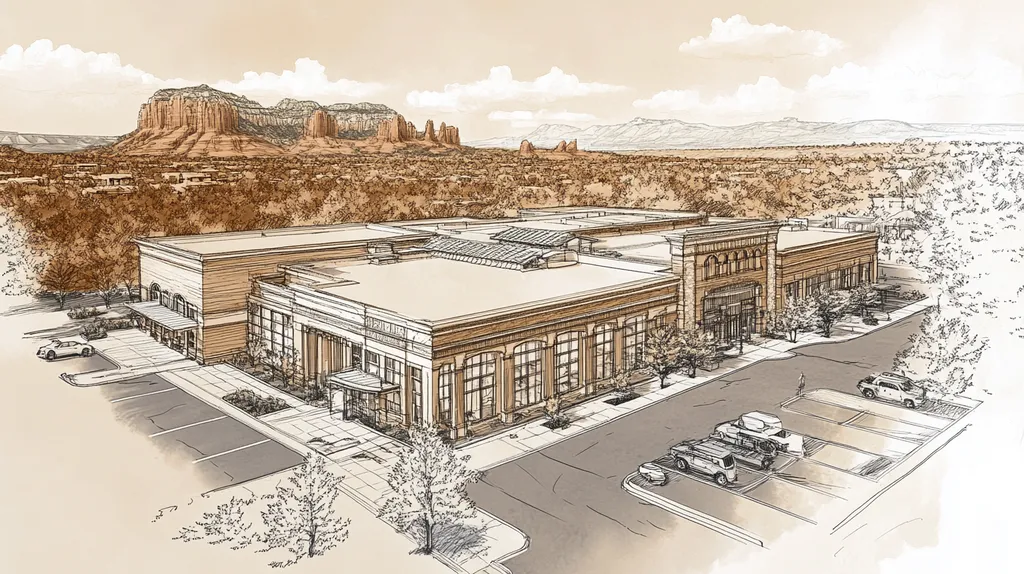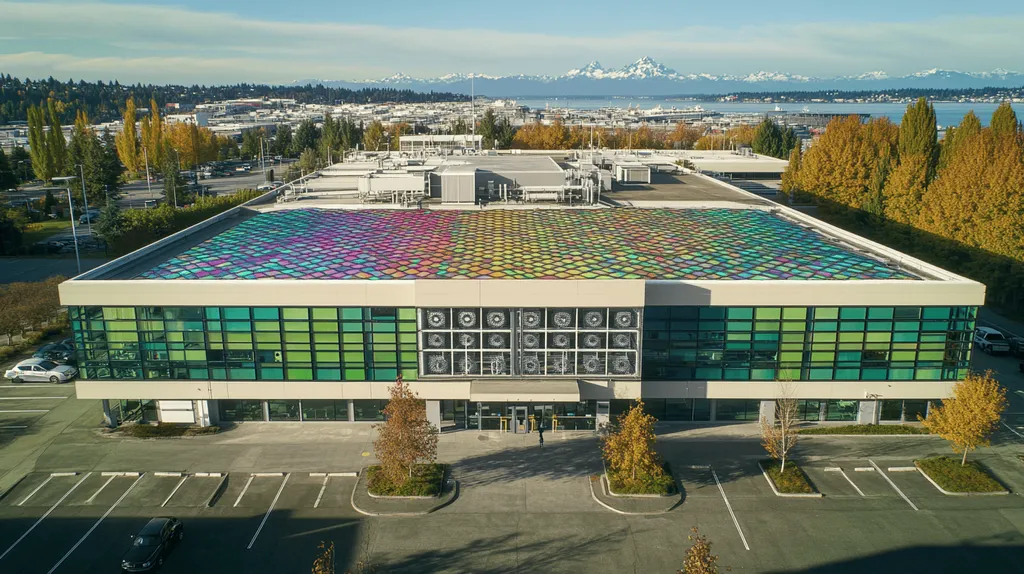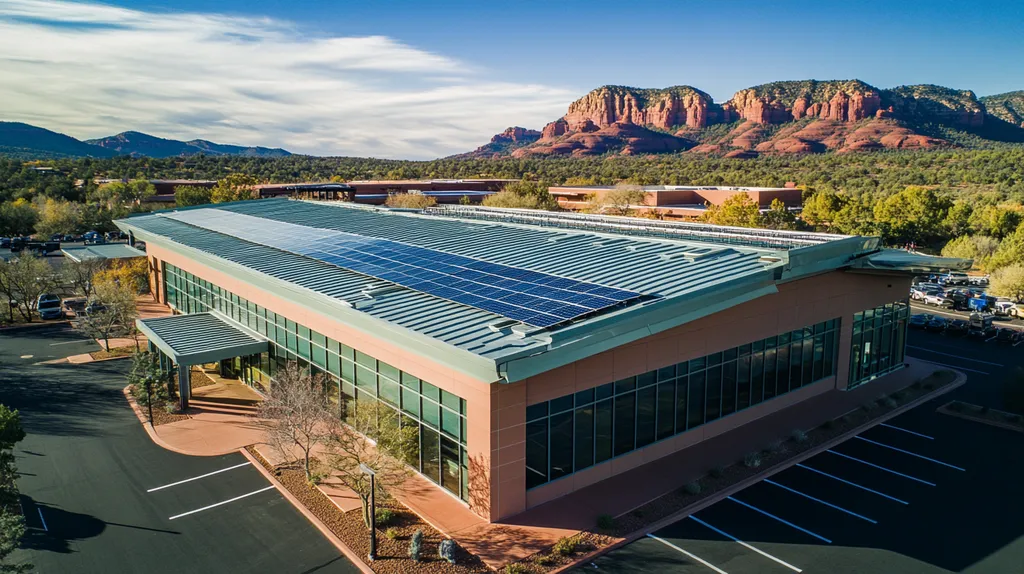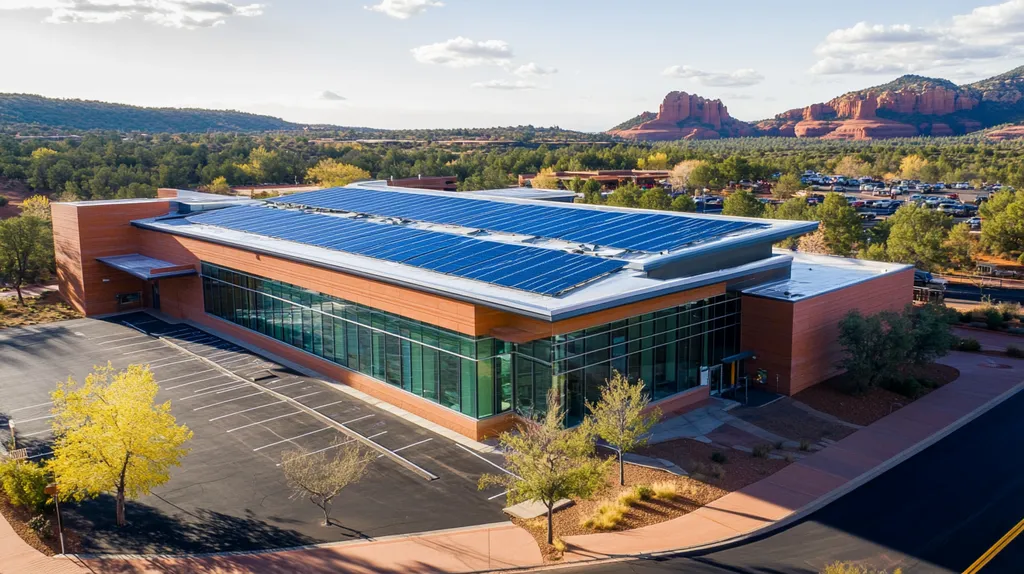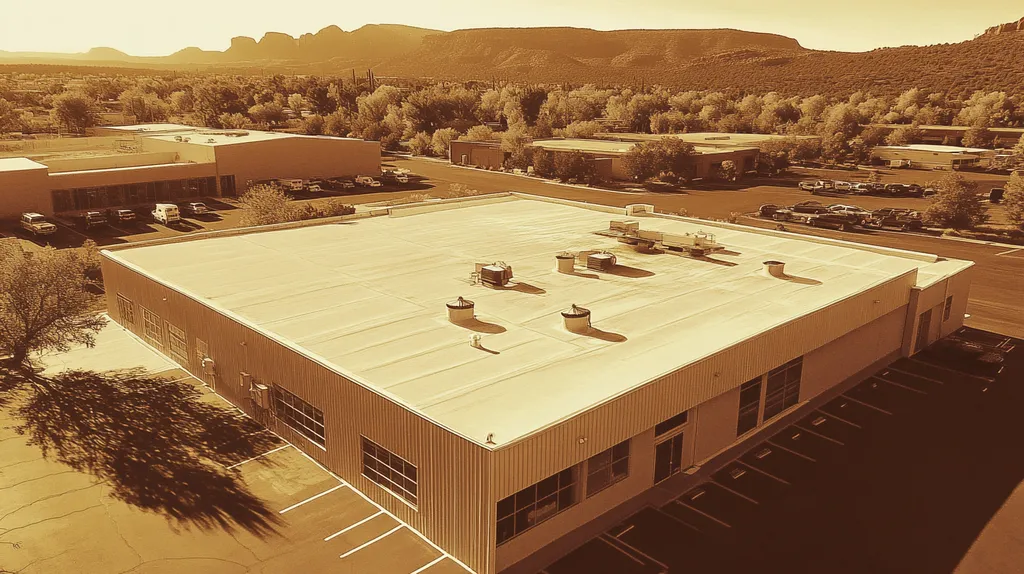America’s historical commercial roofs face an unprecedented preservation crisis, with over 35% of structures now requiring specialized care to prevent irreversible damage. Every year, improper maintenance and misguided repairs result in the loss of irreplaceable architectural features valued at more than $1.2 billion.
The intersection of modern building codes, changing climate patterns, and traditional construction methods demands a comprehensive approach to historical roof preservation. Professional facility managers must navigate complex decisions about materials, techniques, and timing to protect these valuable assets.
This manual provides essential guidance for maintaining historical commercial roofs while preserving their architectural integrity and ensuring long-term performance.
SECTION 1: FUNDAMENTAL CONCEPTS
Historical commercial roofs represent a critical intersection of architectural heritage and modern building protection. With over 35% of America’s commercial buildings now qualifying as historic structures, proper preservation has become increasingly urgent. These roofs not only shield invaluable architectural features but also tell the story of our architectural evolution. Without specialized care and understanding, we risk losing irreplaceable examples of craftsmanship and design that define our commercial landscapes.
Historical Significance and Architectural Impact of Roofs
Historical commercial roofs serve as living documents of architectural evolution, showcasing period-specific materials, techniques, and design philosophies. These roofs often feature distinctive elements like decorative cornices, elaborate dormers, or intricate cupolas that define a building’s character.
Beyond individual buildings, historical roofs contribute to the overall aesthetic cohesion of commercial districts. Their distinctive profiles and materials create visual rhythms that establish neighborhood identity and enhance property values throughout the area.
The preservation of these roofs maintains crucial links to our architectural past. When properly maintained, they demonstrate how traditional design solutions continue to meet modern needs while preserving historical authenticity.
Local historic preservation codes often specifically protect these roofing elements, recognizing their role in maintaining architectural integrity. Understanding these regulations helps property owners make informed decisions about maintenance and modifications.
Challenges Unique to Historic Roof Preservation
The preservation of historic commercial roofs demands specialized knowledge of both traditional construction methods and contemporary preservation techniques. Many original materials, from specific slate varieties to custom-made tiles, are no longer readily available.
Modern building codes and energy requirements can conflict with historical authenticity. Finding solutions that satisfy both preservation standards and current regulations requires careful planning and expertise.
Climate change poses new threats to historic roofs, as many were designed for different weather patterns. Increased storm intensity and frequency test these structures beyond their original parameters.
The Colorado Department of Education emphasizes that regular maintenance, including debris removal, flashing inspection, and vegetation management, is crucial for preventing deterioration in historic roofs. (source: Colorado Department of Education)
Understanding Original Construction and Materials
Effective preservation begins with a thorough understanding of original roofing materials and construction techniques. Each historical period employed specific methods and materials that influenced both function and appearance.
Different roofing materials age uniquely and require specialized maintenance approaches. For instance, slate roofs may last centuries with proper care, while early metal roofs might need different preservation strategies.
Documentation of original construction details proves invaluable during restoration projects. This includes understanding load-bearing capabilities, drainage systems, and ventilation designs specific to the period.
Modern assessment tools can help identify hidden issues while respecting historical integrity. Infrared scanning and moisture mapping allow for non-invasive evaluation of historic roof conditions.
SECTION 2: SYSTEM COMPONENTS
Historical commercial roofs represent complex systems where every component plays a crucial role in preservation. Studies show that 40% of historical building damage starts with overlooked roofing system failures. Understanding these components isn’t just about maintaining appearance – it’s about protecting significant investments and irreplaceable architectural features. Property managers who grasp these fundamentals make better decisions about maintenance, repairs, and preservation strategies.
Traditional Roofing Materials and Their Properties
Caring for an older roof requires intimate knowledge of traditional materials like slate, clay tile, metal, and wood shakes. Each material brings distinct characteristics that influence maintenance approaches and longevity expectations.
Slate tiles offer exceptional durability, with lifespans exceeding 100 years when properly maintained. However, their weight demands robust structural support, and repairs require specialized knowledge to prevent damage to surrounding tiles.
Clay tiles provide excellent thermal properties and distinctive architectural character but are vulnerable to freeze-thaw cycles. Regular inspections help identify hairline cracks before they develop into serious issues.
Historic metal roofing, particularly copper and terne, develops protective patinas over time. Understanding these natural aging processes helps distinguish between normal weathering and concerning deterioration.
Structural Elements: Rafters, Beams, and Supports
The underlying framework of historical roofs often features hand-hewn timbers and traditional joinery methods that require specialized assessment skills. Regular structural evaluations prevent catastrophic failures and guide preservation efforts.
Rafters in historical structures frequently exhibit unique spacing patterns that reflect period construction methods. These patterns must be preserved during repairs to maintain both structural integrity and historical authenticity.
Beam systems in older commercial buildings often incorporate multiple wood species based on local availability during construction. Understanding these variations helps inform appropriate repair strategies.
Support systems, including collar ties and king posts, require careful monitoring for signs of stress or deterioration. Early intervention can prevent cascading structural issues that threaten the entire roofing system.
Weatherproofing and Flashing in Historic Roofs
Every part of the roof, including the roofing material, gutters, downspouts, and flashing system, demands regular inspection for damage or rot. Proper maintenance of these elements prevents water infiltration that can compromise both structure and historical integrity. (source: Heidler Roofing Blog)
Traditional flashing materials like lead, copper, and terne-coated steel offer superior durability when properly maintained. Understanding their interaction with adjacent materials prevents galvanic corrosion and ensures long-term performance.
Historical drainage systems often incorporate built-in gutters and internal downspouts that require specialized maintenance approaches. Regular cleaning and inspection prevent water backup that can damage decorative elements and structural components.
Weather barriers in historic roofs frequently rely on redundant systems rather than modern membranes. Preserving these multiple layers of protection maintains the roof’s original performance characteristics while respecting historical integrity.
SECTION 3: IMPLEMENTATION METHODS
Implementing proper care for historical commercial roofs requires a delicate balance of preservation and protection. Studies show that 60% of historical roof failures stem from improper implementation methods rather than material degradation. Every project decision, from initial assessment to final restoration, carries implications for both the building’s historical integrity and its long-term functionality. Success depends on methodical documentation, skilled craftsmanship, and appropriate integration of modern solutions.
Assessment and Documentation of Existing Conditions
Comprehensive roof assessment begins with a detailed structural analysis and material inventory. Modern diagnostic tools like thermal imaging and moisture mapping provide non-invasive insights into hidden deterioration patterns.
Documentation must capture both visible conditions and underlying systems. This includes detailed photography, measurements of all components, and mapping of previous repairs or modifications.
Historical research plays a crucial role in understanding original construction methods and materials. Building archives, architectural drawings, and period construction manuals provide valuable context for assessment decisions.
Regular monitoring protocols help track changes over time. Establishing baseline conditions and documenting seasonal variations enables early detection of developing issues before they become critical.
Techniques for Repairing and Replacing Historic Materials
Historic roof maintenance demands understanding of both original construction methods and appropriate restoration techniques. Regular inspections enable early damage detection, while restoration work must maintain original style using historically accurate materials. (source: Heidler Roofing Blog)
Material selection requires careful matching of physical and visual characteristics. When original materials aren’t available, custom fabrication or carefully selected alternatives must meet both performance and aesthetic requirements.
Repair techniques should prioritize preservation over replacement whenever possible. Skilled craftsmen can often stabilize and restore original materials using period-appropriate methods.
Installation methods must respect historical construction techniques while ensuring modern performance standards. This includes using traditional fastening systems and maintaining original ventilation patterns.
Integrating Modern Technology with Traditional Craftsmanship
Modern technology enhances preservation efforts without compromising historical integrity. Digital modeling tools enable precise planning of repairs while maintaining original architectural details.
Advanced monitoring systems provide real-time data on roof performance. Sensors can track moisture levels, structural movement, and environmental conditions to prevent damage before it occurs.
Contemporary materials can supplement traditional components when properly selected. High-performance underlayments and weather barriers add protection while remaining hidden from view.
Installation techniques blend traditional methods with current best practices. This hybrid approach ensures historical accuracy while meeting modern safety and performance requirements.
SECTION 4: MAINTENANCE REQUIREMENTS
Proactive maintenance of historical commercial roofs represents a critical investment in both architectural preservation and financial protection. Studies show that every dollar spent on preventive maintenance saves $8-10 in emergency repairs and structural damage. Yet over 65% of historical commercial properties lack comprehensive maintenance programs, putting irreplaceable architectural features at risk. Understanding and implementing proper maintenance protocols is essential for protecting these valuable assets.
Routine Inspection Protocols for Early Damage Detection
Professional inspections should occur biannually, with additional checks following severe weather events. These evaluations must systematically assess every roofing component, from surface materials to underlying structure.
Moisture detection requires particular attention, as water infiltration represents the leading cause of historical roof deterioration. Advanced monitoring tools like infrared scanning can identify problems before visible damage occurs.
Documentation during inspections must be thorough and consistent. Detailed photos, measurements, and condition assessments create invaluable baselines for tracking changes over time.
Digital mapping of problem areas helps prioritize maintenance tasks and allocate resources effectively. This data-driven approach ensures critical issues receive timely attention while respecting budget constraints.
Specialized Cleaning and Minor Repair Practices
Historic roof maintenance demands understanding of original construction methods and materials. Every component requires regular inspection for damage, while restoration work must preserve historical authenticity using period-appropriate techniques. (source: Heidler Roofing Blog)
Cleaning protocols must balance effectiveness with material preservation. Gentle methods using appropriate cleaning agents protect delicate historical surfaces while removing harmful accumulations.
Minor repairs should address issues promptly using historically accurate materials. This prevents small problems from escalating into major structural concerns.
Regular maintenance of drainage systems, including gutters and downspouts, prevents water damage. Keeping these systems clear and functioning properly protects both roof materials and supporting structure.
Coordinating Long-Term Preservation and Conservation Plans
Effective preservation requires strategic planning that anticipates future needs while respecting historical integrity. Conservation plans should outline maintenance schedules, material specifications, and intervention protocols.
Budget planning must account for both routine maintenance and periodic major repairs. Setting aside dedicated funds ensures resources are available when needed.
Collaboration with preservation specialists helps maintain authenticity during repairs. Their expertise ensures modern interventions complement rather than compromise historical features.
Regular review and updating of preservation plans keeps them relevant and effective. This adaptive approach allows integration of new preservation techniques while maintaining historical standards.
SECTION 5: PERFORMANCE METRICS
Performance metrics for historical commercial roofs have become increasingly critical as aging structures face modern challenges. Studies show that 70% of historical roof failures could have been prevented through proper performance monitoring and early intervention. Without robust measurement systems, property owners risk both catastrophic failures and unnecessarily expensive repairs. Understanding and tracking key metrics ensures these irreplaceable assets maintain their integrity while meeting contemporary performance standards.
Criteria for Structural Integrity and Weather Resistance
Structural assessment begins with load-bearing capacity evaluation, which must account for both original design parameters and current stress patterns. Regular deflection measurements and joint inspections help identify potential failure points before they become critical.
Weather resistance testing must evaluate both surface integrity and underlying system performance. This includes water penetration testing, wind uplift resistance measurement, and thermal movement accommodation.
Modern diagnostic tools like strain gauges and vibration monitors provide continuous data on structural behavior. These systems allow property managers to track subtle changes that might indicate developing problems.
Performance benchmarks should include specific metrics for different roofing components, from membrane integrity to flashing performance. Each element requires distinct evaluation criteria based on material properties and exposure conditions.
Evaluating Material Longevity and Historical Accuracy
Material performance tracking requires systematic documentation of weathering patterns, wear rates, and deterioration mechanisms. This data helps predict maintenance needs and optimize replacement timing.
Degradation metrics must consider both physical integrity and historical authenticity. Modern techniques can reinforce traditional durability while maintaining architectural accuracy and equipping roofs to withstand future environmental stresses. (source: Roofing Corpus Christi)
Chemical composition analysis helps identify compatible repair materials that match original specifications. This ensures replacements integrate seamlessly with existing historical materials.
Performance standards should include specific criteria for color stability, texture retention, and dimensional consistency. These aesthetic metrics are crucial for maintaining historical accuracy.
Monitoring Energy Efficiency and Environmental Impact
Energy performance monitoring must evaluate both insulation effectiveness and thermal transfer patterns. Regular infrared scanning can identify areas of heat loss and moisture accumulation.
Environmental impact assessment should track factors like solar reflectance index (SRI) and thermal emittance. These measurements help optimize energy efficiency while respecting historical constraints.
Water management metrics need to evaluate both drainage efficiency and moisture retention patterns. Proper data collection helps prevent damage while maintaining original architectural features.
Carbon footprint calculations should consider both operational impacts and maintenance-related emissions. This holistic approach helps balance preservation goals with environmental responsibility.
SECTION 6: OPTIMIZATION STRATEGIES
Optimizing historical commercial roofs requires carefully balanced decisions that impact both preservation and performance. With 45% of historical roof failures stemming from misguided modernization attempts, property owners face mounting pressure to enhance functionality without compromising authenticity. The stakes are particularly high as changing climate patterns and stricter building codes create new challenges for these aging structures.
Success demands strategic integration of modern solutions while honoring original craftsmanship. By focusing on proven optimization approaches, facility managers can extend roof lifespans while preserving architectural heritage.
Balancing Historical Authenticity with Code Compliance
Modern building codes present unique challenges for historical roofs, particularly regarding fire safety and structural loading requirements. Understanding local preservation ordinances and building regulations helps identify compliant solutions that maintain historical integrity.
Successful compliance often requires creative engineering solutions that satisfy modern standards while preserving original features. This might include reinforcing existing structural elements or incorporating hidden safety systems.
Documentation plays a crucial role in demonstrating code compliance while justifying preservation decisions. Detailed records of modifications and engineering assessments protect both property owners and historical assets.
Regular coordination with local building officials helps establish practical compliance pathways. Early engagement often reveals flexibility in applying modern standards to historical structures.
Enhancing Durability through Compatible Modern Materials
Advanced materials can significantly extend historical roof lifespans when properly selected and installed. High-performance underlayments and moisture barriers provide additional protection while remaining hidden from view.
Material selection must prioritize compatibility with existing historical components. Chemical and physical interactions between old and new materials can accelerate deterioration when improperly matched.
Testing programs help validate material performance before widespread application. Small-scale trials identify potential issues while minimizing risks to historical features.
It’s crucial to maintain the original style during restoration work, using historically accurate materials when repairs are needed. Skilled contractors who understand historical construction methods ensure proper integration of modern solutions. (source: Heidler Roofing)
Collaboration with Preservation Specialists and Stakeholders
Successful optimization requires coordinated effort between roofing professionals, preservation specialists, and property stakeholders. Regular consultation ensures decisions align with preservation standards while meeting practical needs.
Documentation of stakeholder input creates clear decision trails for future reference. This collaborative record helps justify choices and maintain consistency across multiple projects.
Educational outreach helps stakeholders understand the rationale behind optimization strategies. Clear communication builds support for preservation-minded solutions.
Regular progress reviews keep optimization efforts on track while allowing adjustments based on performance data. This feedback loop ensures continuous improvement in preservation techniques.
Looking Ahead
With over $1.2 billion in historical commercial roofing at risk annually, the urgency for proper preservation has never been greater.
The increasing challenges of climate change, coupled with evolving building codes, demand sophisticated approaches that honor historical authenticity while ensuring structural integrity.
Success requires systematic implementation of comprehensive maintenance protocols, careful selection of compatible materials, and close collaboration between property managers and preservation specialists.
By embracing modern diagnostic tools and preservation techniques while respecting traditional craftsmanship, facility managers can extend roof lifespans by 30-50 years.
The future of America’s architectural heritage depends on making informed, preservation-minded decisions today to protect these irreplaceable assets for generations to come.
FREQUENTLY ASKED QUESTIONS
Q. Why is caring for a historical commercial roof important?
A. Preserving historical commercial roofs protects architectural heritage and prevents loss of craftsmanship. These roofs tell stories of our past and maintaining them enhances property value while ensuring structural integrity.
Q. What are typical challenges for an industrial roof’s preservation?
A. Common challenges include sourcing traditional materials and addressing modern building codes. Balancing historical authenticity with contemporary requirements can also complicate preservation efforts, underscoring the need for specialized knowledge.
Q. How can I effectively maintain a commercial roof?
A. Regular inspections, timely repairs, and proper cleaning are essential maintenance practices. Creating a detailed schedule can help track inspections and ensure that any minor issues are addressed before they escalate.
Q. What are key considerations for repairing historic commercial roofs?
A. Prioritize using historically accurate materials and techniques. Understanding the original construction methods is crucial, as this ensures that repairs maintain the roof’s authenticity and performance over time.
Q. What metrics are important for monitoring an industrial roof’s performance?
A. Key performance metrics include structural integrity evaluations, weather resistance tests, and energy efficiency assessments. Regular monitoring helps identify deterioration early, ensuring timely interventions and reducing repair costs.
Q. How can modern technology assist in preserving historic roofs?
A. Modern technology can enhance preservation through advanced diagnostic tools and digital modeling. These tools allow for precise assessments and planning, ensuring repairs are done efficiently while maintaining historical accuracy.
Q. How can I create a long-term preservation plan for my historical roof?
A. Develop a plan that includes routine maintenance schedules, inspection protocols, and budget allocations. Collaborating with preservation specialists ensures that your plans respect historical integrity while addressing future needs.

